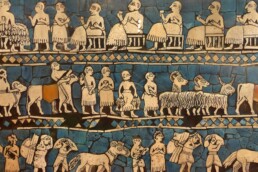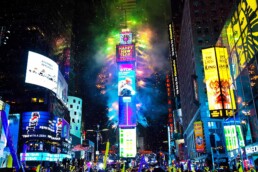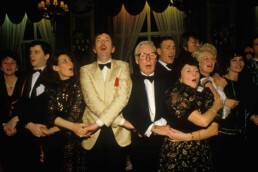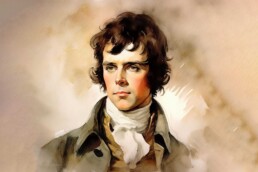Dancing Through Time as the World Welcomes the New Year
As the clock approaches midnight on 31st December, the globe prepares for a magnificent event: the end of one chapter and the beginning of another. This night, rich with history, symbolism, and joy, brings humanity together in a common expectation of renewal. While New Year’s Eve rituals and traditions vary, they all express a desire to honour time, reflect on the past, and embrace the future.
The practice of noting the change from one year to the next goes back thousands of years. Around 2000 BCE, the ancient Mesopotamian celebration of Akitu commemorated the spring equinox, which was considered the start of a new agricultural cycle. Similarly, the Roman calendar started in March, coinciding with the regeneration of nature. However, when Julius Caesar introduced the Julian calendar in 46 BCE, the year began on January 1st in honour of Janus, the Roman deity of beginnings, transitions, and doors.
This alteration went beyond simply aligning the calendar with the sun. It represented the passage of time, with Janus shown as having two faces: one facing backward and the other forward. The custom of New Year’s resolutions can also be traced back to the early Romans, who made commitments to Janus as a show of good faith.
New Year’s Eve celebrations are as diverse as the cultures who commemorate them. Each tradition has its own charm, but all share a spirit of hope and community. In Spain, the ringing of twelve chimes at midnight signifies the quick drinking of twelve grapes, one for each month of the upcoming year. This tradition, thought to bring luck and prosperity, originated in 19th-century Spanish vineyards looking for innovative methods to disperse excess grapes.
Hogmanay, in Scotland, is a vibrant and strongly ingrained festival. The historic ritual of “first-footing,” in which the first visitor after midnight presents symbolic gifts such as coal or whisky, exemplifies Scottish kindness and hospitality.
In Japan, 31st December is a day of quiet introspection and spiritual preparation. Buddhist temples ring bells 108 times to symbolise the purification of 108 earthly aspirations, according to Buddhist beliefs. Families clean their homes and eat Toshikoshi Soba, a noodle meal that symbolises longevity and resilience.
Meanwhile, in Brazil, beaches come alive with revellers dressed in white, a colour that represents peace. Offerings to Yemanjá, the Afro-Brazilian goddess of the sea, are made by floating flowers and candles on the waves—a stunning combination of African traditions with local faith.
Few aspects of New Year’s Eve are more widely recognised than fireworks. These stunning displays stretch back to ancient China, where gunpowder was first developed. Fireworks were used to drive away evil spirits and bring good fortune. Today, they illuminate the skies of places ranging from Sydney to Dubai, turning the night into a colourful canvas.
The sheer size of these displays frequently reflects the cultural significance of the event. In New York City, the iconic ball drop in Times Square, which has been a tradition since 1907, coincides with a spectacular fireworks display, attracting millions of spectators in person and on television.
Food is another important aspect of New Year’s Eve traditions, representing the spirit of abundance and generosity. Lentils are a staple of Italian celebrations, representing riches and success due to their coin-like appearance. Similarly, in the southern United States, delicacies such as black-eyed peas, greens, and cornbread are consumed in the hopes of bringing good fortune, money, and gold in the next year. In Greece, a cake known as Vasilopita is baked with a buried penny. The individual who finds the coin in their slice is thought to have good fortune for the coming year. This habit honours St. Basil, a figure linked with charity and benevolence.
While many traditions are rooted in history, modern influences have transformed how people celebrate New Year’s Eve. From extravagant parties to quiet nights of reflection, the celebration is both highly personal and profoundly social. Social media has heightened the sense of global solidarity by enabling people to communicate their experiences and wishes in real time.
Essentially, New Year’s Eve traditions reflect humanity’s long-standing bond with time. It is an opportunity to pause, reflect, and move on with newfound hope. From ancient traditions to modern celebrations, the night serves as a tribute to our communal perseverance and optimism.
As the final seconds of 31st December tick away, the world comes together in a symphony of joy, anticipation, and hopes for the coming year. Happy New Year !
Auld Lang Syne as Echoes of Midnight That Unite the World
As the clock approaches midnight on 31th December, a melody often rises in harmony around the world, its melancholy notes and emotional lyrics conveying a sense of nostalgia and oneness. This haunting melody has persisted over generations, civilisations, and continents, becoming woven into the fabric of New Year’s celebrations. Its origins, steeped in history and poetry, depict a tale as timeless as the emotions it elicits.
The seeds of this immortal song were planted in Scotland’s foggy hills in the 18th century. The words, credited to poet Robert Burns, were first written in 1788. However, Burns claimed that the lines were not wholly his own, stating that they were based on a “old song” he had heard via oral tradition. His brilliance consisted in transforming the shards into a cohesive, very emotional work that dealt with themes of friendship, grief, and remembering.
The expression “Auld Lang Syne” is ingrained in Scottish accent, loosely translating to “old long since” or, more poetically, “days gone by.” Burns’ song was adapted to the tune of a traditional Scottish folk melody, lending it a haunting aspect that stays with people who sing it.
The lyrics, rich in imagery and sentiment, address the common experience of cherishing shared experiences while acknowledging the passage of time. Lines like “We’ll tak’ a cup o’ kindness yet, for auld lang syne” imply that even as time passes, prior connections ought to be celebrated and reflected upon.
While the song begins with a question—”Should an old acquaintance be forgotten and never brought to mind?”—it responds vehemently in its lines. The message is clear: relationships, no matter how remote, are still worth honouring. This feeling has transformed the song into a global emblem of endings, beginnings, and the eternal strength of human connection.
Its transformation from a Scottish folk song to a worldwide anthem is nothing short of remarkable. The melody has been altered several times, with variations appearing in a variety of languages and circumstances. In the United States, bandleader Guy Lombardo popularised it as a New Year’s Eve tradition through his yearly radio and television broadcasts beginning in the late 1920s. This reinforced its link with the stroke of midnight.
In Japan, the song has been repurposed as “Hotaru no Hikari” (The Light of the Fireflies), a graduation song that represents appreciation and goodbye. South Korea, Thailand, and other countries have incorporated it into cultural rites, frequently changing the lyrics to reflect local traditions and moods.
Cinema has also embraced the song’s emotional appeal. From Frank Capra’s It’s a Wonderful Life to recent films like When Harry Met Sally, the melody highlights dramatic transitional moments, emphasising its significance as a soundtrack for endings and beginnings.
Perhaps its most famous role is as the unofficial anthem for New Year’s Eve. As the clock’s hands converge at midnight, people all over the world join hands, hoist glasses and sing the lines. The act is more than just a custom; it is a ritual of renewal, a collective acknowledgement of the past, and a hopeful look towards the future.
The song’s power is in its simplicity. Its lyrics and melody encourage involvement, even from people who don’t know all the words. The act of singing together creates a bridge across languages, generations, and borders.
In a divided society, this basic song’s continuing popularity stems from its capacity to bring people together. Its themes—friendship, unity, and remembrance—are eternal, as relevant in the twenty-first century as they were when Burns first penned them down.
Each performance, whether performed in a small gathering or broadcast to millions, demonstrates the song’s international appeal. As the old year ends and the new one begins, the notes remind us that no matter how much time passes, the links of human connection continue.
The next time the familiar chords rise into the air around midnight, take a moment to think on the journey of this wonderful song. It is more than just a song; it is a living witness to the power of recollection, the value of connection, and the promise of renewal. As we lift our glasses and sing together, we are not only commemorating the passing of time, but also celebrating the bonds that connect us across the years, miles, and ages.





